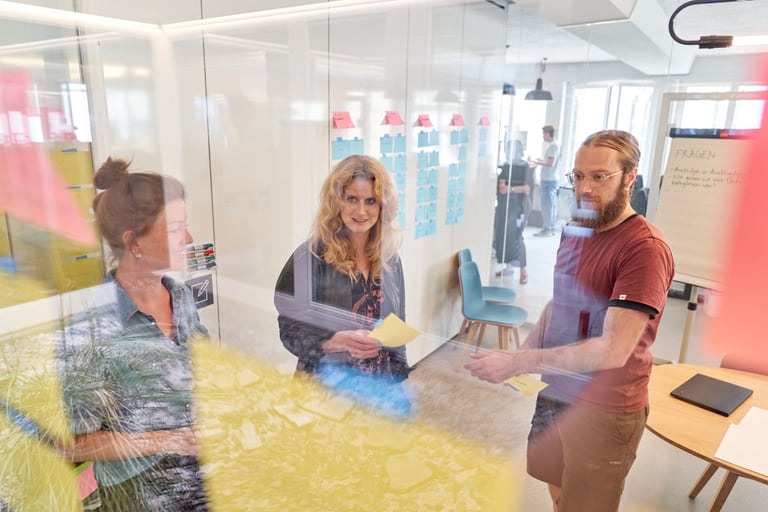Creating consistent, effective digital access points for all stakeholder groups has been and still is the goal of the Banque Cantonale de Fribourg’s online projects. Over the past three years, some powerful new tools have been created to implement the bank’s corporate design and corporate identity in the highest quality. The tools were used everywhere, from the company website to the customer portal to the personalised intranet workplace.
A successfully relaunched website
The complete relaunch of the company website laid the foundations for the BCF’s state-of-the-art web presence, optimised for all devices. A strong focus on users’ needs also meant priming the product portfolio. A corporate identity often requires re-examining the services the company offers. This approach paid off, and product sales increased hugely with the launch.
The key parts of the customer portal at a glance
Users do not always need to open the full e-banking service with its wide range of functions. Viewing account balances or simple transactions is a lower-threshold activity and can be handled accordingly. To a degree, the BCF has developed an e-banking reception area with the customer portal. This portal can be used to manage key customer relationship data and control individual functions of the e-banking service.
Custom functionality in the workplace
The intranet is built on the same technical and design components as the company website and customer portal. The fully redesigned intranet enables BCF employees to organise their work to suit them. Employees can put the various different applications together using adjustable tiles. The majority of the functionality can be used directly in a browser without opening the relevant back-office application.
A dynamic style guide for all digital needs
All digital projects at the BCF are based on the digital style guide. Buttons and input fields need to be consistent across all BCF channels.
This means that as well as feeling that the bank’s portals come from the same mould, a lot of time and effort can be saved in the design process for each new platform by reusing such elements.
Flexibility through decoupling
Modern banking uses a wide variety of systems – a core banking system, interest calculator or CRM – to simplify or fully automate processes. Customised access to all of these tools is vital to ensure efficient everyday banking, for both customers and employees. This is simplest if web applications can be developed and operated entirely separately from back-office processes. Therefore, the BCF has created a unified interface (API) that decouples the web portals from back-office systems. This not only makes the bank much more flexible in implementing very specific needs, but also makes the entire ecosystem more resilient and less dependent on individual business applications.
Gradual development and improvement
Evolution instead of revolution! Customers would rather not be served up a ‘big bang’, but instead see small changes to digital bank access implemented gradually and effortlessly. And it benefits the bank’s project managers if functionalities do not have to be planned too far in advance. Market and technology developments are too fast-moving. Both can be achieved with an agile, iterative implementation. We can boldly implement this with a client like the BCF that has a mature understanding of agility.
Independence thanks to open-source
Our clients always have full access to all of the source code developed by Liip. This means that they can do and arrange whatever they want without restrictions – a key argument for the security of the investment. The fact that we build on a foundation of open-source components also makes the BCF fully independent, even from Liip. Instating this independence is vital proof that our collaboration is about one thing: creating the best possible web applications for the BCF!

